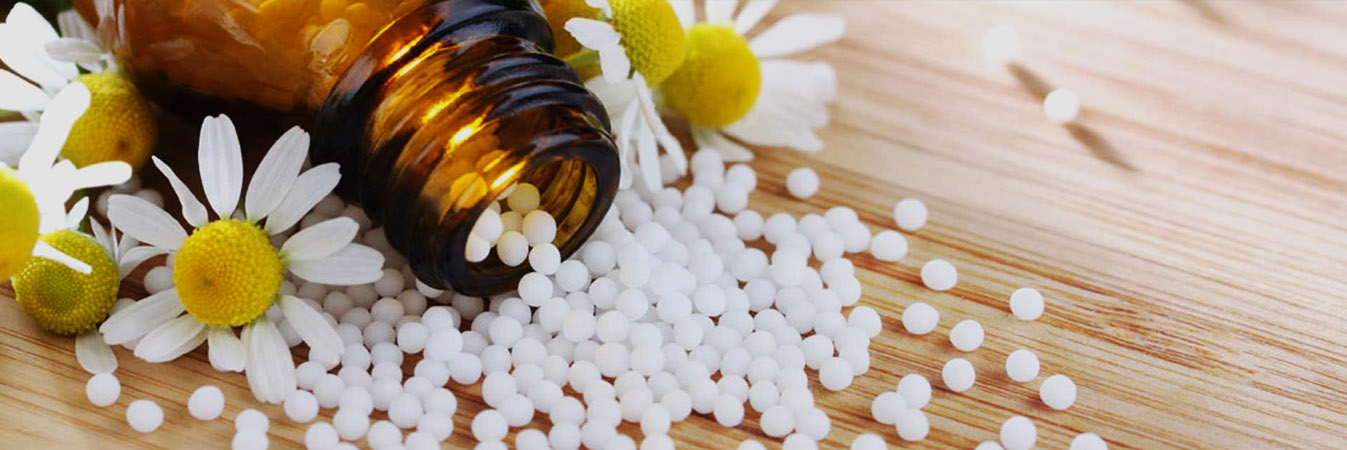
Arnica Montana, commonly known as leopard’s bane, is a plant indigenous to Europe. It is mainly cultivated in North America. The word ‘Arnica’ has been derived from Latin meaning ‘Lambskin’, because of the wooly textured leaves. However, the word ‘Montana’ depicts mountains, i.e., where the plant grows. The drug Arnica Montana is prepared from the roots of its plant.
Back in those days, when it was not yet scientifically proven to have medicinal properties, the locals used to pop it into their mouth in cases of falls, injuries, and pains. Little was it known that this plant would have intrinsic medicinal properties that could replace a surgeon’s knife in some cases.
Arnica has been used in homeopathy to treat a variety of injuries, both fresh and old. It can be used to treat both the acute and chronic effects of injuries. These injuries leave a sore, bruised feeling all over the body. The patient feels restless and cannot find a comfortable spot to rest at. In the olden times, it was also used as a topical treatment.
Arnica has an important role to play in many conditions, but it is a renowned drug for its action on the injuries. It can be given for major as well as minor injuries, where the bleeding is concealed and the skin stays intact. Arnica is known to have antibiotic and muscle relaxing properties as well.
The efficacy of Arnica in healing injured tissues is testified from the fact that many surgeons around the world use this homeopathic medicine to promote healing and minimizing postoperative infections.
Arnica tends to suit ‘Plethoric’ constitutions, meaning those who have an abounding quantity of blood, with a red face and lively expressions. Constitutionally, the patients are predisposed to congestions of the parts like the head and limbs.
The chief action of arnica is on the blood and blood vessel particularly on the capillaries (small blood vessels). It is known to possess a quality of absorbing blood. It also has antibiotic properties, hence preventing septic conditions. On the muscles, it acts as a muscle relaxant and relieves the tension of the stressed parts.
A bruise is a bluish black discoloration that forms under the skin, sometimes may look like a blood clot.
Arnica is an infallible remedy for such complaints. The bruises could be due to any reason, be it a mechanical trauma or due to weak capillaries. It has been clinically seen that sometimes people tend to have a random bruise here and other and the patient himself is not aware of any trauma at the site. Such bruises can arise as a result of extravasation(outflow) of blood from the small vessels owing to the weak capillary walls. This is how Arnica can do wonders in such cases; it affects the weak capillary walls and strengthens them and also causes constriction of the dilated small vessel, stopping the flow of blood. It can affect these vessels and increases their power to retain the blood. It is a wonderful remedy in the first stage of injury, where much bruising has been done and the pain is intense but diffused.
It can also be given for bruises that arise as a result of a blow to the stomach or other organs. Not to forget its impeccable role in treating ‘Black Eye’, i.e.the bluish black discoloration surrounding the eye which is generally because of a strong blow to the part.
The parts that are bruised are very sore; the soreness being much greater than the size of the bruise. The patient can barely afford to move or let alone touch the affected part. Arnica can help in dealing with the soreness and tenderness in such cases, along with healing the bruise.
Arnica has a wonderful capability of reabsorption of blood. It can be given for hematomas (collection of blood under superficial layers), for conditions where there is concealed bleeding, the blood has escaped out of the capillaries but the skin remains intact. Such conditions when there is no sufficient tone in the fibers of the vessel to hold the blood. The vessel walls then ooze out blood. These hemorrhages are a result of mechanical traumas, which are blunt without causing any open wounds. An important thing to note in cases of injuries where there has been bleeding is that Arnica should only be used once the bleeding has stopped (either by suturing or once the wound has gone through the stage of initial clot formation). It is a well-indicated remedy for cases of retinal hemorrhages and helps in the easy resolving of the condition. It can also be given in cases of epistaxis ( bleeding from the nose) especially after an episode of injury to the nasal area. Here, Arnica helps in vasoconstriction of the vessels and helps in stopping the bleeding.
It also very effectively dissolves the petechial hemorrhages (small pinpointed bleeding spots under the skin), owing again to the re-absorption capability of the medicine.
Arnica has often proved to be beneficial for cases where the wounds have a tendency for pus formation that could be avoided with its use. It can be given in cases of pyaemia and septicaemia, as a result of a trauma. It often happens that after a blow or contusion, the patient gets restless, has a lame sore feeling all over the body, tosses and turns on lying down, cannot find a spot soft enough to make him feel relaxed. This could or could not be attended with fever. In such cases, Arnica has proven to be a great remedy. It can remove the bacterial infections in the background owing to its antibiotic properties, along with healing the concealed bleeding under the skin and other consequences of an injury. Many surgeons use Arnica in order to prevent postoperative infections in their patients.
A very common type of injury that almost everyone has faced one time or the other is a sprain due to a misstep. An injury of the ligaments is known as a sprain. It can be caused due to twisting of the foot in an undesired manner. It is a very common type of injury seen in sportsmen or in women who wear high heels. Such cases of sprains where even wearing the shoe could seem like a task can be marvelously healed with Arnica. Arnica relaxes the tension of the twisted ligament and helps in managing the pain, soreness and the lameness of the part affected. The black and blue appearance of the sprained part goes away in a surprisingly short time, and one can manipulate the part with much ease.
Arnica is especially given in fractures of the head or spine, with the compression of the brain. It very well manages those cases where the patient goes into a coma (unconscious state) after an accident, where there is head injury or the spinal cord may be involved. It can minimize the post-injury effects and works well for people who go into a coma following the injury. Its effective role in helping a patient come out of coma post the injury puts Arnica under the special category of treating head injuries.
Conditions that arise after a head injury (whether recent or remote), can be effectively treated with the remedy. For example, epilepsy following an injury to the head, loss of memory, speech problems following an injury etc. are also effectively cured with Arnica.
Fractures of the bone may call for the use of Arnica, both externally and internally, to relieve the swelling of the limb. Many times, people develop localized muscle twitching after a fracture, which is nothing but a reflex of the fracture. They feel significantly better with respect to the pain, swelling, and tenderness when treated with Arnica. Arnica helps in speeding the process of healing and preventing the infection and deterioration of the bone.
A very common phenomenon that has been clinically seen is that once a disease has taken its course and resolved, it leaves a trail of unrelated complaints behind. For instance, after an episode of flu, patients complain of muscular pains all over. They cannot relate it to any other event but to the illness that they have suffered in the past. Such pains (though have no direct relation to the illness they have suffered from), cannot be ignored. This is where Arnica can prove to be beneficial. It is an underestimated remedy in such cases of myalgia (muscle pains), where the muscle pains have started as a consequence of a disease. It can also be given for cases where the muscles are sore and tender as a result of over-straining, be it at the gym or laborious working at a workplace.
It works brilliantly in myalgia of the intercostal muscles (muscles between the ribs) after exertion, where the person feels as if his ribs are bruised, and even breathing becomes difficult for him.
Homeopathic medicine Arnica is recommended in the potency of 30C. In recent, fresh injuries it can be repeated frequently. In cases of remote injuries, it can be used in high potencies but with infrequent repetitions.
It can also be applied locally in the form of tincture, but not on abraded (broken) skin.
Caution: Although homeopathic medicine Arnica is a safe remedy to use, a homeopathic physician must be consulted prior to its use.
Arnica follows well after Aconite, Apis, Ham, Ipecacuanha and Veratrum album.
Mild-to-moderate injuries can be effectively treated at home using Arnica. It is also sold by the name of Arnica Montana. 30 c potency of Arnica can be taken internally 4- 5 times a day. Its use should be discontinued once the desirable relief has been achieved. In cases where the injury is severe and blood loss is uncontrollable, one should immediately contact the local hospital

